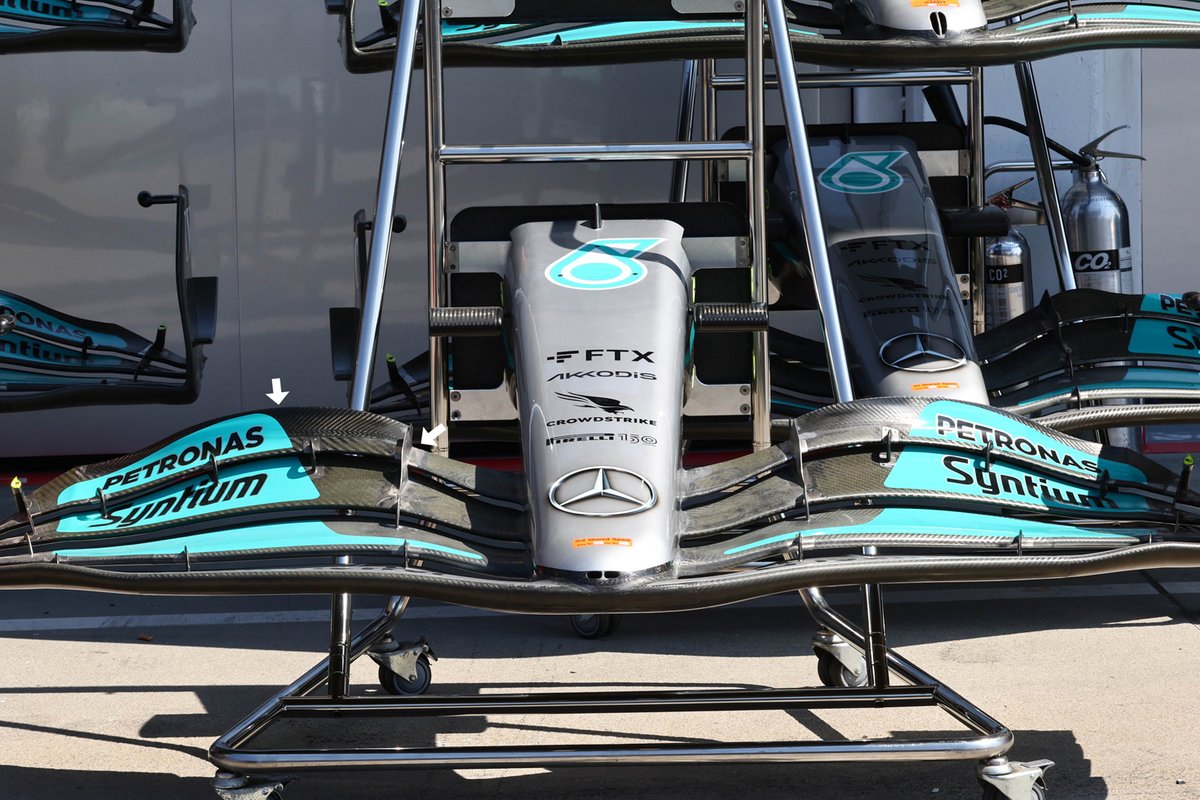
The high downforce nature of the Hungaroring means that the team not only has new parts on the car, but also some older ones which help suit the team’s needs too.
This starts at the front of the car, as the team utilises a more highly loaded front wing, having previously trimmed the upper elements when necessary to help reduce downforce and drag.
This helps balance the car better, as the team has returned to the higher downforce configuration rear wing, albeit with some modifications for this race in order to get the best from it (circled, second image, below).
Given the constraints posed by the budget cap, the team has decided not to manufacture an entirely new assembly but perform some surgery on this portion of the wing instead, as can be seen by the shut lines and rivets used to stitch the two sections, new and old, together.
Changes have also been made to the beam wing setup, with the camber of elements increased as a means of providing additional downforce and the necessary balance for the other alterations that have been made.
Mercedes has also turned to another old favourite in Hungary, as a pair of boomerang winglets now sit astride the W13’s halo.
The winglets, which have been a staple for many teams since the halo arrived in 2018, help to control the airflow over the safety device, ensuring the flow remains attached, whilst conditioning and improving said flow to the rear of the car.
Mercedes used a similar arrangement throughout the course of last year’s campaign but had opted not to install the winglets during the first half of this year, perhaps unable to see their performance benefit with its original aerodynamic layout.










